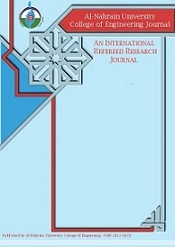Effect of Salt Content on The Corrosion Rate of Steel Pipe in Turbulently Flowing Solutions
Keywords:
corrosion, salt, turbulent,, carbon steel, friction factor.Abstract
The effect of salt content on the corrosion rate of carbon steel pipe in aerated water under isothermal turbulent flow condition (Reynolds number= 15000-110000 and temperature of 30-60oC) is investigated by weight loss method. The test solutions were distilled water (one time distilled) and sea water (0.5N NaCl). Also the results of 0.1N NaCl solution obtained by Hasan [2003] were considered. The effect of Reynolds number temperature on the corrosion rate is also studied and discussed. For each run, nine specimens of carbon steel were placed in the test section and the corrosion rate for each one was determined at every Re and
temperature and the average was taken. The variation of friction factor with Re and temperature was determined by measuring pressure drop across the test section. The results revealed that the salt content has considerable effect on the corrosion rate for the whole investigated range of Re and temperature. The highest corrosion rate was encountered in sea water (3.5% NaCl). Also distilled water causes considerable corrosion rate but it is lower than for the whole range
of Re and temperature. Also it is found that Reynolds number increases the corrosion rate depending on temperature. Temperature affects the corrosion rate by
changing two main parameters, oxygen solubility and diffusivity
Downloads
Downloads
Published
Issue
Section
License
The authors retain the copyright of their manuscript by submitting the work to this journal, and all open access articles are distributed under the terms of the Creative Commons Attribution-NonCommercial 4.0 International (CC-BY-NC 4.0), which permits use for any non-commercial purpose, distribution, and reproduction in any medium, provided that the original work is properly cited.









